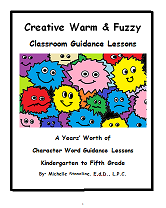Sand Tray Therapy Lesson Plan for Rational Emotive Behavior Therapy: -Student #2
by Sand Tray Therapy Student
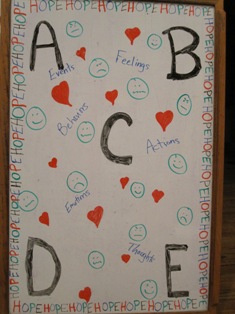
A-B-C Framework Handout for Sand Tray Therapy: Rational Emotive Behavior Therapy
A-B-C Framework with Hope for Sand Tray Therapy / Rational Emotive Behavior Therapy
Rationale: The concept of the A-B-C Framework is central to rational emotive behavior therapy (REBT), a cognitive behavior theory that is effective for helping clients with depression. This model helps clients understand their feelings, thoughts, events, and behavior. A is an activating event or the behavior or attitude of a person. C is the emotional and behavioral consequence. B is the person’s belief about A and is the cause of C, the emotional reaction of the person. Clients can identify the irrational beliefs that cause their disturbed emotional consequences and change them. In addition, giving clients the opportunity to express reasons for staying alive will help to diminish their depression.
Materials: Handout of the A-B-C Framework
Assorted miniatures of choice
Directions:
1. Give client a handout of the A-B-C Framework and explain A, B, and C.
A=Activating Event (can also be a behavior or attitude)
B=Belief about the activating event
C=Consequence (emotional or behavioral; reaction)
Explanation: the beliefs about the rejection or failure at point B are the main cause of the depression.
2. Have client use half of the sandtray and select miniatures to describe the “frames in the film” that depict scenes of the sequence of events that led to the suicide attempt or self-harming behavior, the details of the actual event, and events that followed the destructive behavior.
3. Ask the client to describe each scene that they have created. The therapist asks them about their reactions to the events that led to the suicidal or self-harming crisis.
NOTE: The analysis includes identification of vulnerability factors and activating events such as a stressful life event associated with the crisis as well as the adolescents’ thoughts, feelings, and behaviors occurring at the moment of the unhealthy behavior along with their reaction to these events.
A-B-C Framework with Hope (p. 2)
4. Ask the client the following questions:
-- What might be ongoing vulnerabilities to environmental triggers?
-- What are short and long-term consequences for threatening suicide or self-harming behavior?
-- What are some thoughts or interpretations that lead to increased suicidal or self-harm thinking?
5. As the client is describing their suicide attempt or self-harming experience and the thoughts and emotions related to the experience, the therapist is looking for certain client deficits such as the inability to regulate emotions, the inability to resolve problems, the inability to tolerate distress, and the inability to address negative thoughts or beliefs such as hopelessness or worthlessness.
6. The therapist will listen for the clients’ cognitive distortions including “shoulds,”” musts,” and “oughts,””self-downing,” and “awfulizing” and make notes.
7. The therapist will teach the client about cognitive distortions and explain D-Disputing Intervention, E (Effect), and F (New Feeling) from the A-B-C Framework handout. The therapist informs client of the irrational beliefs, cognitive distortions, and negative thinking that they had noted while the client explained their experience of suicide attempt or self-harm and challenges their irrational beliefs. The therapist teaches the client how faulty beliefs lead to negative consequences.
8. The therapist encourages clients to actively dispute their faulty beliefs and substitute rational (self-helping) beliefs and behaviors for irrational ones. Also, the therapist will encourage clients to monitor their self-talk, identify maladaptive self-talk, and substitute adaptive self-talk for negative self-talk. The therapist teaches the client that they have the capacity to change their cognitions, behaviors, and emotions. Clients are instructed to avoid being preoccupied with A and acknowledge that it is not healthy to continue to dwell on the emotional and behavioral consequences of C. Instead, they are encouraged to choose to examine, challenge, modify, and uproot B—the irrational beliefs they hold about the activating events at A.
9. To help instill a sense of hope, the therapist asks the client to use the other half of the sandtray and choose miniatures to demonstrate their personal reasons for living. Delineating reasons to live is an important activity because learning to cope with suicidal urges is rather empty if there are no reasons to want to cope. The therapist tells the client that some of the their reasons may include the people who care about them, the things the patient can look forward to in the future, things the patient likes to do, and things that the patient cares about. The therapist explains to the client how recalling reasons to stay alive may be impaired during a crisis.
A-B-C Framework with Hope (p. 3)
10. Give the client homework so they can practice using the A-B-C Framework to describe a behavior that they will engage in over the next week.
FINAL NOTE: This lesson can continue to be used in treatment as the client continues examining how their beliefs affect their feelings and behaviors. The therapist can use this as an assessment tool for how well the client is progressing with improving their rational beliefs, recognizing their cognitive distortions, and moving toward the goals of unconditional self-acceptance and unconditional other acceptance.
How to Use The Sand Tray for Sand Tray Therapy Link:
More Ideas on Sand Tray Therapy
For more free ideas on creative therapy visit the link below:
Creative Counseling 101.com Home
Disclaimer: This website and its content is intended for trained licensed mental health professionals and school certified mental health professionals to use for their clients / students at their own discretion.
*If you ignore the disclaimer above are using these techniques on yourself and you feel any discomfort or upset it is highly suggested that you seek out a licensed mental health professional immediately.
"Beyond Art Therapy" is the concept from Dr. Stangline that combines all creative fields in therapy. It is not the traditional "art therapy" but goes beyond to include sand tray therapy, play therapy, mindfulness, meditation, color therapy, cognitive behavioral therapy, and a vast majority of other therapies.
For any other type of mental health emergency call your local 911 / Police Number immediately.
Dr. Stangline does not offer advice / suggestions to anyone who is not a professional mental health provider, or a student who is studying this field and has questions about mental health programs of study.
See our Exciting Selection of eBooks:
Award Winning:
Creative Counseling 101 eBook
Our Best Seller!
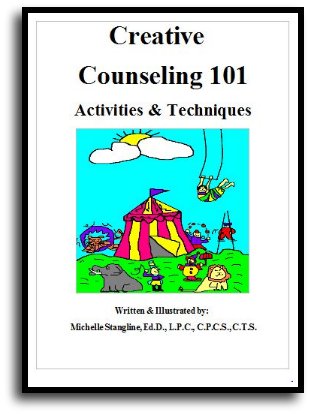
Step By Step Therapy:
Learn how to be a more Creative Therapist with the Book that started it all!
- Graduate School Counseling book used by hundreds of graduate counseling students!
- Includes full color reproducible worksheets with most activities.
- Winner of the Counselor Writer of the Year Award, 2011, Georgia Regional Award
Download Your Copy Today Only $39.95:
See Creative Counseling 101 eBook Information Here:
Get the Set
of all four
eBooks for only $98.95:
An incredible collection of how to do therapy eBooks!
A $159.80 Value,
You Save Over $60!
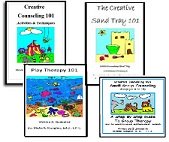
Get your complete set of the Creative Counseling 101.com eBooks by Dr. Michelle Stangline for only $98.95, that's less than $25.00 per eBook (Regular Price is $39.95 for each eBook.).
Your complete set includes:
- Creative Counseling 101
- Creative Group Counseling 101
- Creative Play Therapy 101
- Creative Sand Tray 101
For more information click the link below:
See Complete Set of eBooks For Sale Here:
New!!! "Beyond Art Therapy" 101 eBook
Over 300 pages of Beyond Art Therapy activities and techniques. Learn what I teach graduate counseling students!
See the link below for more information.
Only $39.95
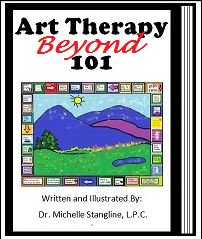
See More Invividual eBooks For Sale:
Sand Tray Therapy 101 eBook:
Learn how to do Sand Tray Therapy or enhance your skills.
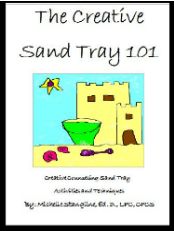
Play Therapy 101 eBook
Learn how to do play therapy or enhance your skills.
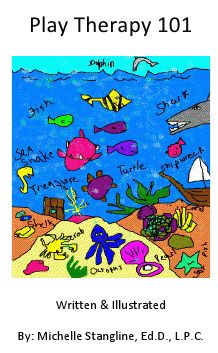
Small Group Counseling eBook For Sale:
Learn how to do creative group therapy and enhance your skills.
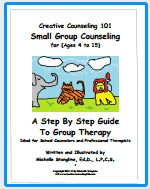
School Counselor Guidance Lesson & Social Stories eBook for sale:
Get a year's worth of school counselor guidance lessons with "Creative Warm & Fuzzy Classroom Guidance Lessons eBook". Introduce your students to the "Warm & Fuzzy Way". Click the link below for more information:
Warm & Fuzzy School Counselor Guidance Lessons eBook
